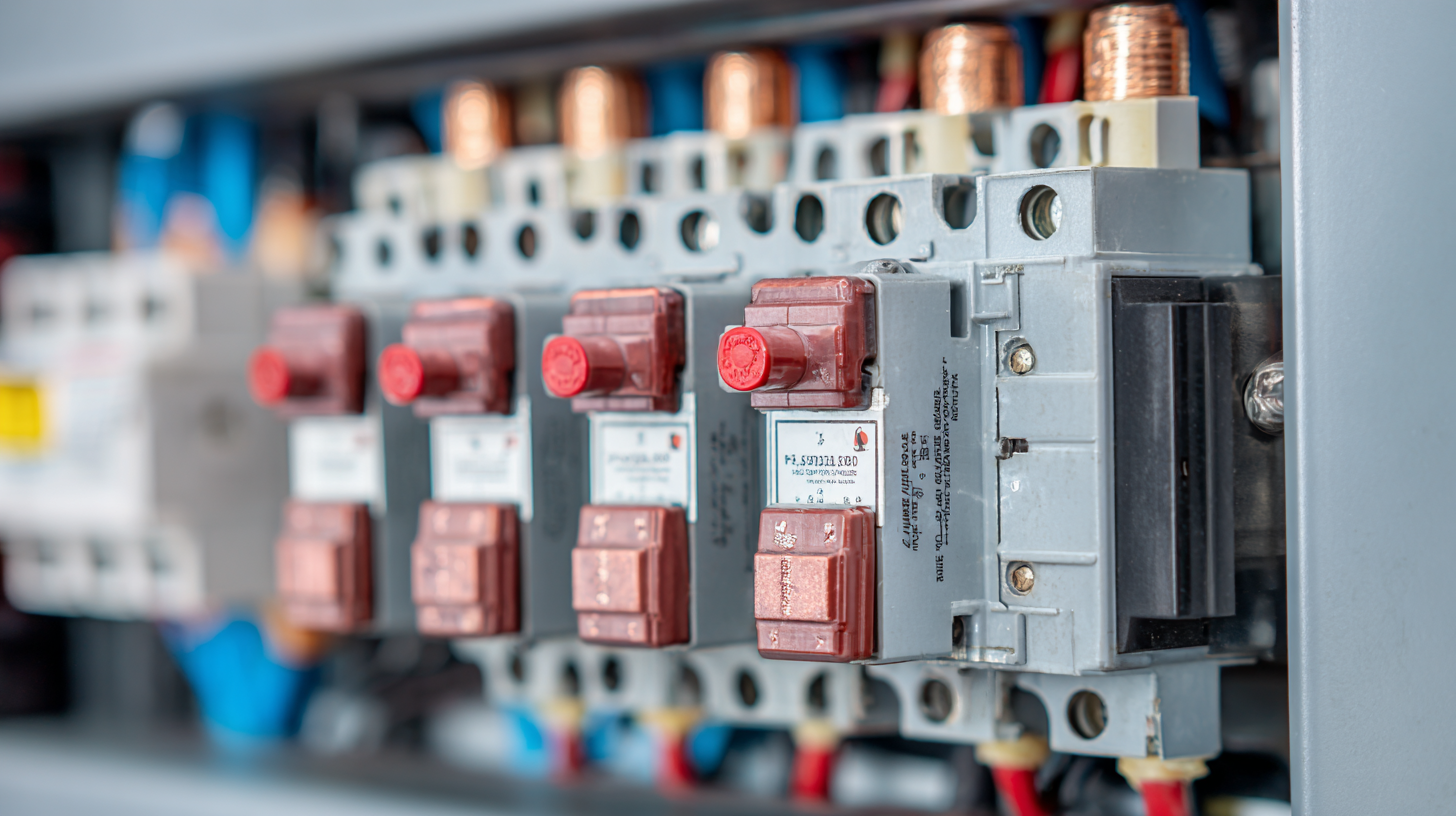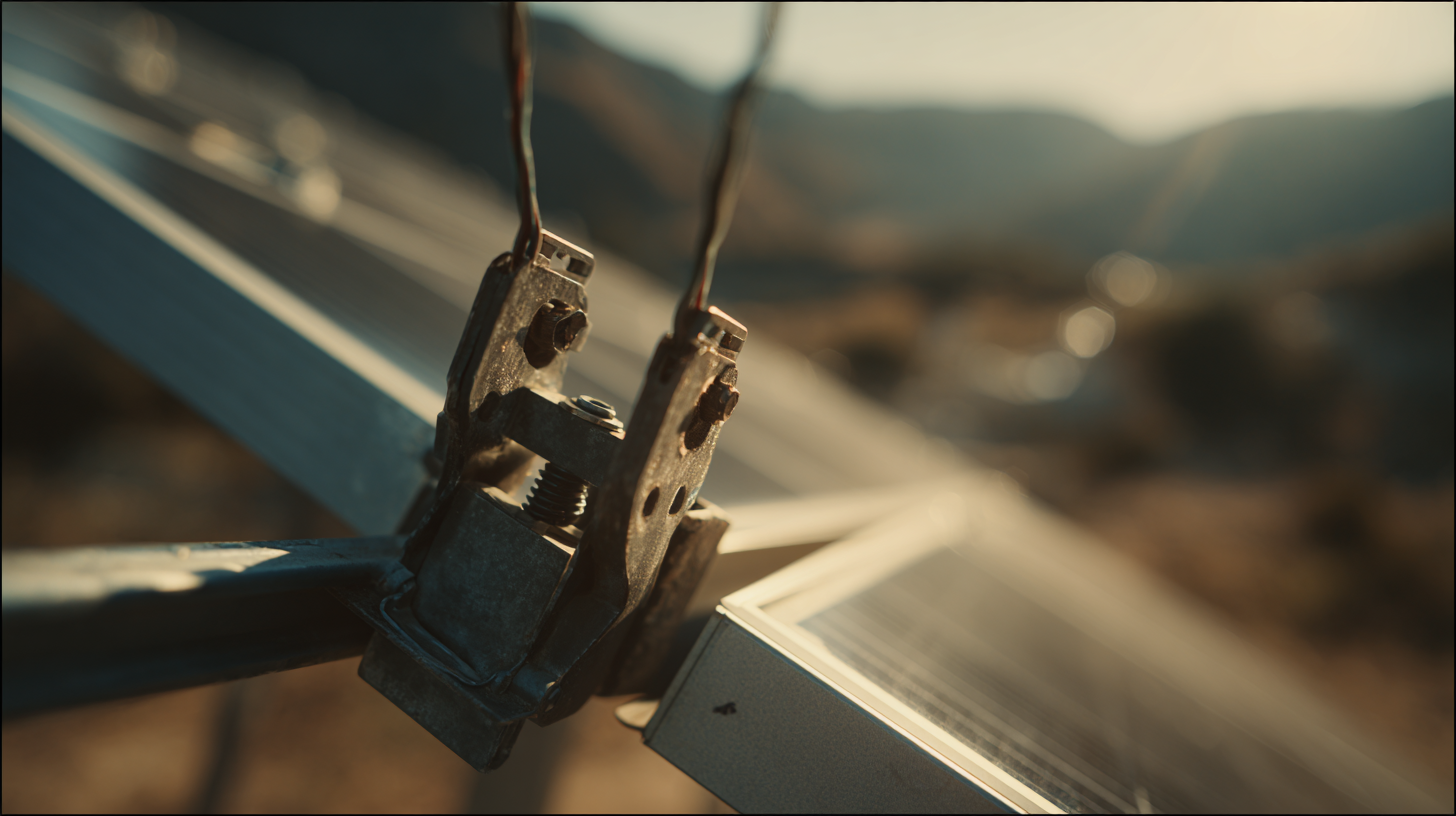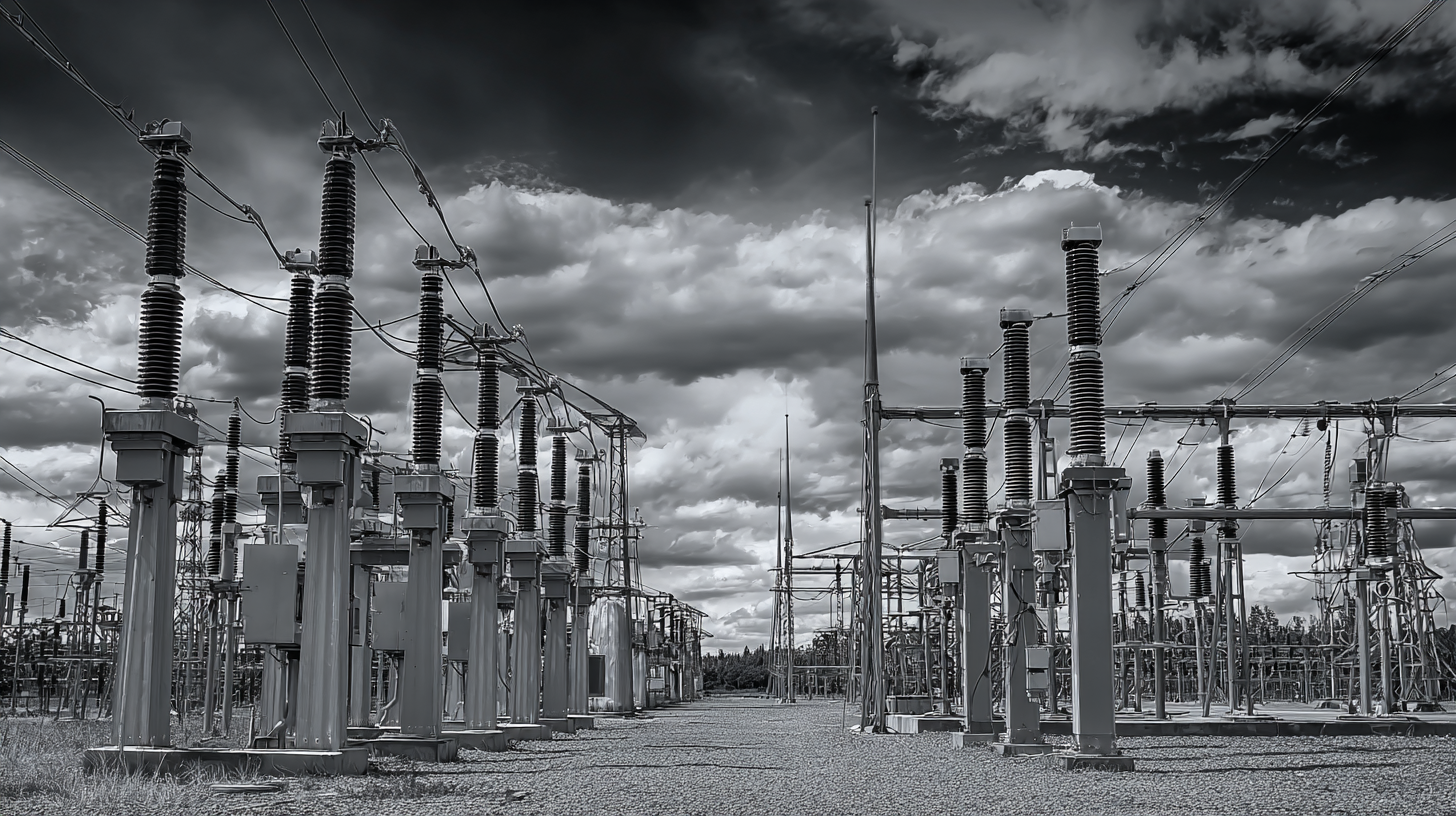Solutions for Selecting the Ultimate DC Breaker for Solar Applications
Table of Contents
- Understanding DC Breakers: Key Features for Solar Applications
- Types of DC Circuit Breakers: A Comprehensive Overview
- Factors to Consider When Selecting DC Breakers for Solar Systems
- Benefits of Digital vs. Traditional Circuit Breakers in Solar Use
- Top Recommended DC Breakers for Efficient Solar Energy Management
- Installation and Maintenance Tips for Optimal Performance of DC Breakers
- Maximizing Solar Efficiency: The Essential Role of MC4 Y Connectors in Your Solar Panel System
- FAQS
- Related Posts
As more and more folks are looking into renewable energy options, choosing the right DC breaker for solar setups has really become a big deal. It’s super important if you want your system to work reliably and efficiently. Did you know that according to a recent report from the International Renewable Energy Agency (IRENA), the world’s solar capacity hit over 800 gigawatts back in 2021? And honestly, that number's expected to jump even more in the next few years. With all this rapid growth, it’s essential for solar installers and engineers to get a good handle on the different types of DC breakers out there—how they work, and how they can boost overall system performance.

Zhejiang Cejia Electric Co., Ltd., with over 20 years in the game, is really dedicated to providing top-notch energy storage solutions that adapt to the changing market needs. By using quality products that fit right into solar systems, Cejia helps users make the most of solar energy while keeping safety and standards in check—that’s pretty important, right?
Understanding DC Breakers: Key Features for Solar Applications
When you're choosing a DC breaker for solar setups, it's really important to get a good grasp of the key features. You see, DC breakers need to handle the voltage swings that come with solar energy systems—since the amount of sunlight can vary quite a bit throughout the day. One thing to pay attention to is whether the breaker can handle high DC voltages and currents reliably. After all, solar panels produce direct current that can sometimes be much higher than what you'd see in typical AC systems. And don’t forget about environmental factors—things like temperature changes can really impact how well the breaker performs. That’s why thermal stability is a big deal here.
Plus, as folks are pushing to get the most out of solar energy, there’s a lot of cool new tech coming into play—like using down-conversion materials in perovskite solar cells. These help boost performance by fixing some of the efficiency issues, especially with the blue light reaction, which is a big focus for the industry. In this whole picture, having a smart, reliable DC breaker isn’t just about protecting your system. It’s also about making sure the energy from these innovative technologies can be captured and stored without any hiccups. As demand for cleaner, sustainable energy keeps climbing, picking the right DC breaker is more crucial than ever if you want your solar setup to run smoothly and last a long time.

Types of DC Circuit Breakers: A Comprehensive Overview
When you're choosing a DC circuit breaker (DCCB) for solar projects, it’s really important to get a good understanding of the different types out there. DCCBs come in various designs—think Hybrid and Solid-State breakers—which are suited for different voltage levels and fault scenarios. For example, the Z-source circuit breaker has proven to be super quick when responding to faults, making it a solid choice for DC power systems where fast isolation is a must. Looking at all these technologies together, you really see how much they impact system performance, especially in large-scale renewable setups like VSC-HVDC systems, which are becoming more and more critical in renewable energy integration.
**Tip:** Make sure to check the voltage ratings and interrupting capacity of your DCCB to match your PV system’s specs. Using a breaker that doesn’t quite fit can lead to equipment breakdowns and more downtime, which is definitely something you want to avoid.
Also, the tech for protecting these systems is advancing fast, and it’s shaping the future of microgrids. Because renewable energy sources bring their own challenges, protecting devices have had to evolve to keep everything running smoothly and reliably. Taking good care of your switchgear is also a big deal—regular monitoring can spot problems early before they turn into costly repairs or replacements.
**Tip:** Regularly check and monitor your switchgear to keep everything running smoothly. Catching issues early can save you a lot of headache down the line!
Factors to Consider When Selecting DC Breakers for Solar Systems
When you're choosing DC breakers for your solar setup, there are quite a few important things to keep in mind to make sure everything runs smoothly and safely. First off, you really wanna pay attention to the voltage and current ratings of the breaker. It’s super important that the breaker matches the specific electrical specs of your solar panels and inverter—otherwise, you might run into overloads or, worse, failures. Also, don’t forget to check the breaking capacity. You want a breaker that can handle fault currents without getting damaged or tripping unnecessarily.
Another thing to think about is where the breaker’s gonna be working. Environmental conditions can seriously affect its performance and longevity. Things like temperature swings, humidity, dust—those all matter. Picking a breaker with a solid enclosure rating, like IP65 or higher, can make a big difference, especially if it’s outdoors.
Here at Zhejiang Cejia Electric Co., Ltd., we’ve got a ton of experience in the energy storage game—over 20 years, actually. We design our products with all these factors in mind, so you get reliable, durable solutions that are perfect for solar projects. Plus, we make sure they’re competitively priced, so you get quality without breaking the bank.
Solutions for Selecting the Ultimate DC Breaker for Solar Applications
Benefits of Digital vs. Traditional Circuit Breakers in Solar Use
So, when you're picking a circuit breaker for your solar setup, you might find yourself caught in the classic debate: digital versus traditional. Digital breakers, with all their fancy tech, actually come with quite a few perks. They let you keep an eye on energy use, catch faults faster, and generally help your system run more smoothly. Plus, since they're smart, you can do updates and run diagnostics remotely — super handy for convenience and safety.
**Pro tip:** If you're leaning towards digital, look for models that show real-time data. It might just save you some hassle by catching issues early, helping your solar setup last longer and work better.
On the flip side, traditional breakers are simpler—no bells or whistles. They do the job, but they don’t have those bells and whistles that can be pretty important for solar systems. They lack the flexibility and insights you get with smart tech, which makes proactive maintenance kinda tricky. And let’s be honest, without those smart features, it’s easy to overlook small problems until they become a big deal.
**Another tip:** If you decide to go with traditional breakers, just make sure to do regular inspections and maintenance manually. It’s the best way to catch potential issues early and keep everything running smoothly.
Solutions for Selecting the Ultimate DC Breaker for Solar Applications - Benefits of Digital vs. Traditional Circuit Breakers in Solar Use
| Features | Digital Circuit Breakers | Traditional Circuit Breakers |
|---|---|---|
| Real-time Monitoring | Yes | No |
| Adjustable Trip Settings | Yes | Limited |
| Remote Control Capability | Yes | No |
| Installation Complexity | Moderate | Low |
| Cost | Higher | Lower |
| Response Time | Fast | Standard |
| Data Logging | Available | Not available |
Top Recommended DC Breakers for Efficient Solar Energy Management
Hey, so the DC circuit breaker market is really set to grow quite a bit. It’s expected to jump from around $5.39 billion in 2025 all the way up to roughly $9.13 billion by 2032 — that’s a compound annual growth rate of about 7.8%. A big part of this boost is because more folks are jumping on the solar energy bandwagon, which of course needs good, reliable energy management gear—things like solid DC breakers. These devices are pretty crucial in solar setups, especially in photovoltaic (PV) systems, where they help keep everything safe and make the solar installations last longer.
As solar tech keeps developing, the 2022 and 2025 Solar Inverter Buyer’s Guides show off a bunch of options. They’re catering to all kinds of projects, highlighting the latest in DC circuit breaker tech. Thanks to these innovations, storage systems—particularly off-grid ones—are way safer and more efficient. Plus, studies suggest that wisely deploying circuit breakers in DC systems can seriously boost how well the power grid performs. All of this just underscores how important it is to pick the right DC breaker for solar projects if we want things to run smoothly and reliably as renewable energy keeps growing.
Installation and Maintenance Tips for Optimal Performance of DC Breakers
 When you're dealing with solar setups, stuff like installing and maintaining DC breakers is super important to keep everything running smoothly and safely. First off, choosing the right breaker is key—you want one that matches your system’s voltage and current needs. Make sure you follow the manufacturer's instructions carefully, like double-checking all your connections are solid and placing the breaker somewhere protected from the weather.
When you're dealing with solar setups, stuff like installing and maintaining DC breakers is super important to keep everything running smoothly and safely. First off, choosing the right breaker is key—you want one that matches your system’s voltage and current needs. Make sure you follow the manufacturer's instructions carefully, like double-checking all your connections are solid and placing the breaker somewhere protected from the weather.
If you want your DC breaker to last longer, think about using good enclosure materials that keep out dust and moisture. It's also a good idea to check on the breaker regularly. Look for any signs of wear or corrosion and make sure all connections are still tight. Performing some basic tests to see if the breaker tripping properly during overloads is a smart move, too.
And don’t forget to keep records of your maintenance—this way, you can track how it's holding up over time and catch any issues early. If you stick to these tips for installing and caring for your DC breakers, you'll get way more reliability and a longer lifespan out of them for your solar projects.
Maximizing Solar Efficiency: The Essential Role of MC4 Y Connectors in Your Solar Panel System
In the quest for maximizing solar panel efficiency, the significance of MC4 Y Connectors cannot be overstated. These connectors serve as the crucial link between photovoltaic devices, including DC combiner boxes and inverters, ensuring that energy is transmitted smoothly and safely throughout the system. Designed with a high level of engineering precision, MC4 connectors provide double electric shock-free protection during load closures and disconnections, making them an essential component for any solar panel setup.
What sets the MC4 series apart is its durability and robustness. With waterproofing rated at IP67, these connectors are rainproof, moisture-proof, and dust-proof—perfect for outdoor installations where environmental factors can be a concern. Additionally, they are built with high heat resistance and corrosion resistance, ensuring a long lifespan even in challenging conditions. The thick copper inner core and high-quality materials utilised in their construction not only enhance reliability but also contribute to rapid connections and anti-vibration functionality, making them ideal for both residential and commercial solar systems. Investing in MC4 Y Connectors is a step towards ensuring that your solar energy system operates at peak efficiency.
FAQS
: Key factors include the voltage and current ratings of the breaker, its breaking capacity, and the environmental conditions it will operate in, such as temperature, humidity, and exposure to dust.
The voltage and current ratings ensure that the DC breakers are compatible with the electrical characteristics of solar panels and inverter systems, preventing overloads and failures.
Breaking capacity refers to the breaker's ability to interrupt fault currents without being damaged. It's essential for the safety and reliability of the solar system.
Environmental conditions, such as temperature fluctuations and humidity, can impact the reliability and lifespan of DC breakers, necessitating the selection of a breaker with a suitable enclosure rating.
Ensure that the right breaker is selected for the system's voltage and current, follow the manufacturer's guidelines for secure connections, and mount the breaker in a protected location.
Regular maintenance ensures continued efficiency, identifies wear or corrosion, and confirms that connections remain tight, ultimately maximizing the reliability and lifespan of the breakers.
Periodic inspections for wear or corrosion, functional testing under overload conditions, and keeping records of maintenance activities are recommended for optimal performance.
Appropriate enclosure materials that shield against dust and moisture should be used to enhance the longevity of DC breakers, especially in outdoor installations.
Perform functional testing to confirm that the breaker trips properly under overload conditions, ensuring that it will effectively protect the system during faults.
Zhejiang Cejia Electric Co., Ltd. has over 20 years of experience in the energy storage market, focusing on providing robust and reliable solutions for solar applications.
Related Posts
-

7 Essential Tips for Choosing the Best Residual Circuit Breaker for Your Needs
-

How to Choose the Right DC Breaker for Your Solar Energy System Efficiency
-

2025 Market Insights on Best Electric Inverters: Data-Driven Strategies for Success
-

Exploring the Advantages of Choosing the Best MCB and MCCB for Global Suppliers
-

Understanding Industry Standards for Selecting the Best Solar DC Breaker Solutions
-

China's Resilient Growth Amidst US China Tariffs Spotlighting Best Miniature Breakers


